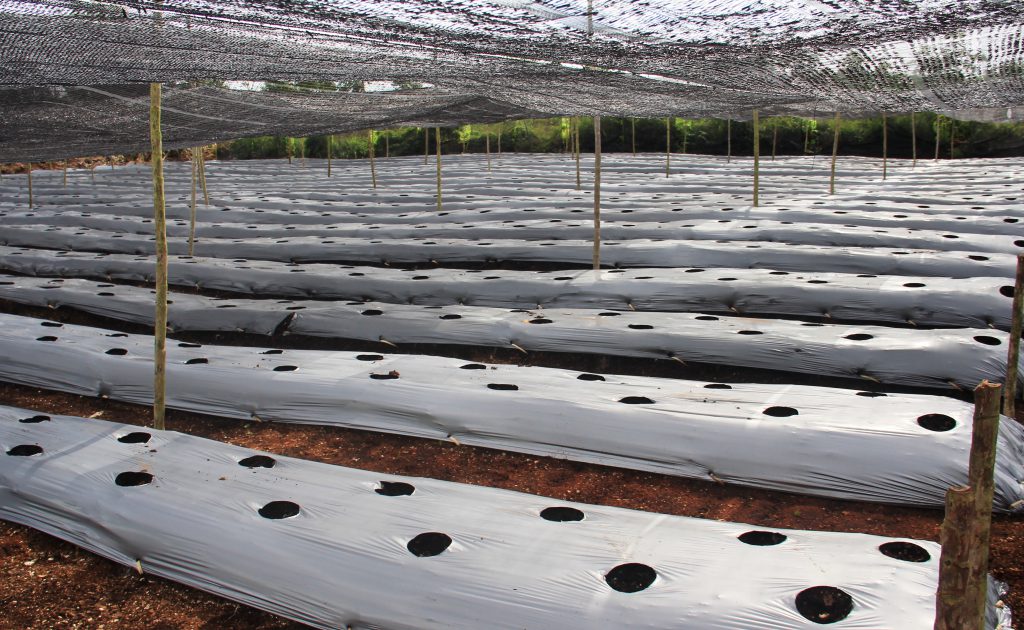Fostering Sustainable Livelihoods in Riau’s Rural Areas
There are around 17,000 people living in the area surrounding Restorasi Ekosistem Riau (RER), many of whom depend on the land for their livelihood. Enabling local communities to lead more sustainable lives while benefiting economically is crucial for the restoration project to succeed in the long-term.
In less than two years, Riau chili farmer Zamri has steadily maximised production and yields in a relatively small plot of land adjacent to fiber plantations and natural forest, keeping the area fire-free and even generating employment.
Unreliable returns from the harvesting of maize prompted the 41-year-old father of two to try chili farming, using seedlings provided by BIDARA, a non-governmental organisation working to build the self-reliance of Indonesia’s rural communities.
“Maize cultivation often failed, so I felt it was better to have chilies because this requires a smaller cultivation area and has a higher yield,” says Zamri, who usually goes by the nickname Acok. In addition to his wife and children, he is also responsible for his mother and sister who live with him.
Since he began planting and cultivating his first chili crop in July 2016 on just 0.3 ha of land, Acok’s harvest has increased, allowing him to reinvest his earnings to expand and intensify his operation for growing more chilies, a very popular commodity in most Indonesian households.
“Now, I can harvest every three to four months and gather between one and three tonnes of chilli in a single harvest to sell at the market for 30,000 rupiah (about $2) per kilogramme,” said Acok.
BIDARA is one of the implementing partners of Restorasi Ekosistem Riau (RER) and is tasked with helping communities near the ecosystem restoration sites to implement sustainable agriculture, improving their well-being through food production and income generation, and as a means to prevent forest encroachment and degradation.
Launched by APRIL in 2013, RER’s multi-year program employs an integrated landscape-level approach to protect, assess, restore and manage some 150,000 hectares of degraded peatland as a unique, biodiverse forest.
RER, along with other stakeholders, works with communities to provide alternatives to the traditional slash and burn agriculture practices. These alternatives take the form of skills, tools such as hand tractors, and consistent mentoring in an effort to reduce pressure on natural forests.
“When we explained the reasons not to burn, we had to first demonstrate the benefits of alternatives to maize, as well as providing practical, and most importantly affordable alternatives to land clearing without resorting to slash and burn,” said Syahroji, BIDARA’s community officer who works with the community of Pulau Muda village, in the Sanggar sub-district.
The community was identified by the organisation as one of the groups of smallholders that had historically used fire to clear land for agriculture.
Initially, Acok was hesitant to switch from burning to preparing his cultivation area manually, because he believed he needed the ash from burning to fertilise his maize.
During dry periods, using fire meant that only a day was needed for clearing the land for replanting. By contrast, manual cultivation requires the use of hand tools for up to three weeks to initially cut and clear weeds and cultivate the land, removing large roots in preparation for using a hand-tractor; and finally creating planting beds.

Since Acok began cultivating his first crop in July 2016, his earnings have increased, allowing him to reinvest into expansion which includes creating a shaded area for chili seedlings.
“They explained how fire polluted the environment and, to be honest, I was also afraid of fires destroying the surrounding area, as that had happened elsewhere. With BIDARA’s equipment and advice, I felt confident that I could switch to another crop without losing my source of income,” he said.
Acok’s mother, Hasmahwati, 58, said: “This change has been good for us. Where we used to only be able to eat only fish and rice, we can now have chicken a few times a week”.
Today, Acok’s chili farm spans three hectares and is also a source of income for his neighbours. He now employs four people who work three days a week to help him prepare the seedlings, each earning 50,000 rupiah in return for preparing 10 trays of 150 seedlings.
“I feel good that I can share the benefits with others by creating employment”.




